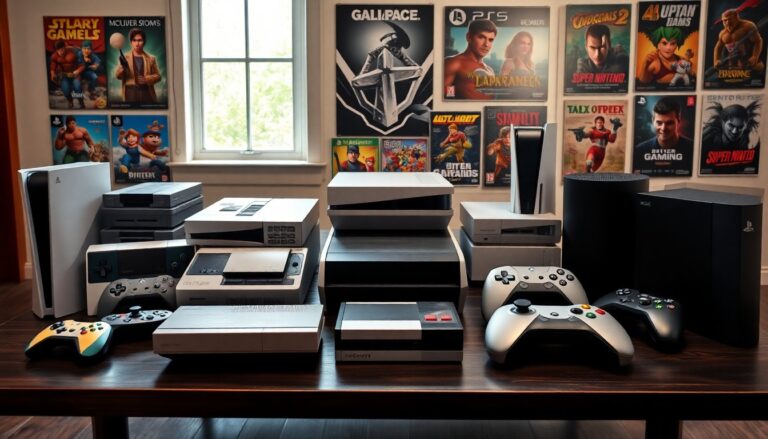Argomenti trattati
The world of gaming consoles has undergone a significant transformation over the decades. Beginning with the rudimentary systems of the late 1970s, each generation has introduced innovations that have reshaped the gaming experience. This article examines the evolution of gaming consoles, focusing on technological advancements, their impact on gaming culture, and potential future developments.
The early days of gaming consoles
The journey of gaming consoles commenced with the introduction of the first home console, the Magnavox Odyssey, in 1972. This groundbreaking device marked the beginning of a new era, enabling players to enjoy games at home. Although the graphics were basic and gameplay limited, the Odyssey laid the groundwork for future consoles.
The rise of home gaming
In the late 1970s and early 1980s, the gaming industry witnessed a surge in home console popularity. The Atari 2600, introduced in 1977, became a household name, significantly influencing gaming culture with its cartridge-based system. Players could easily switch between games, a revolutionary concept at the time. However, the industry encountered a major setback with the crash of 1983, resulting in a decline in console sales.
The 16-bit era and the birth of handheld gaming
The gaming landscape began to shift dramatically in the late 1980s with the emergence of the 16-bit era. Consoles like the Sega Genesis and the Nintendo Entertainment System (NES) enhanced graphics and sound capabilities, allowing developers to create more complex and engaging games. This period also marked the introduction of handheld gaming consoles, such as the Nintendo Game Boy, which broadened the gaming demographic.
Technological advancements
With the arrival of the 1990s, the gaming industry experienced another technological leap. The introduction of the Sony PlayStation in 1994 revolutionized the market by utilizing CDs instead of cartridges, enabling larger game storage and improved graphics. This shift diversified the landscape, as multiple companies began competing for dominance.
The modern era of gaming consoles
As the 2000s unfolded, gaming saw the introduction of consoles like the Xbox and the Nintendo Wii, each contributing unique features. The Xbox Live service allowed players to connect and compete online, while the Wii introduced motion controls, making gaming more accessible to a broader audience.
The impact of digital gaming
As technology progressed, the gaming experience evolved. The rise of digital gaming and downloadable content (DLC) transformed player interactions with consoles. The PlayStation 4 and Xbox One further integrated online services, enabling seamless updates, multiplayer experiences, and digital libraries. Today, players can purchase and download games directly to their consoles, eliminating the need for physical copies.
Looking to the future
Looking ahead, the future of gaming consoles appears promising. With the announcement of the PlayStation 5 and Xbox Series X, we can anticipate advanced graphics, faster load times, and enhanced virtual reality experiences. The integration of cloud gaming services, such as Google Stadia and Xbox Cloud Gaming, will also enable players to enjoy games on various devices without requiring powerful hardware.
Moreover, trends like cross-platform play are becoming more prevalent, allowing gamers to connect regardless of the console they own, fostering a more inclusive gaming community.
The evolution of gaming consoles represents a fascinating journey characterized by innovation and creativity. From the humble beginnings of the Magnavox Odyssey to today’s advanced systems, gaming consoles have transformed how we play and connect through gaming culture. As technology continues to advance, the possibilities for the future remain boundless, promising an exciting landscape for gamers worldwide.

